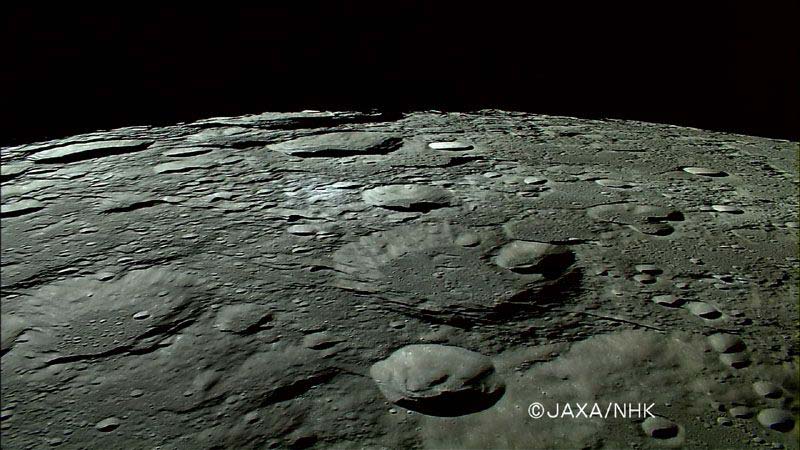Craters Expose the Moon's Insides

Rocksoriginating deep below the moon's surface that contain rich amounts of one ofthe most common minerals found on Earth were recently discovered around ancientimpact craters on the lunar surface.
Therocks were chock full of the mineral olivine, which is thought to originatefrom within the lunar mantle,beneath the crust. Olivine is a silicate or rock-forming mineral that iscommonly found on Earth. But, prior to this study, olivine findings on the moonwere very limited.
"Beforeour research there were only two or three olivine exposure sites," SatoruYamamoto, the study's lead author, told SPACE.com. "The question was: whyare the olivine exposures very limited on the moon?"
Yamamotois a researcher at the Center for Global Environmental Research at the NationalInstitute for Environmental Studies in Tsukuba, Japan. He and his team ofresearchers analyzed spectroscopic data from the Japanese Kaguya lunar probe,which surveyed the composition of the moon's surface by measuring the relativeamounts of different wavelengths of light it emitted.
"Ourteam focused on the analysis of the spectra of the lunar surface,"Yamamoto said. "Each data has many very fine high-resolution wavelengths.Therefore, we can distinguish the absorption band ? namely we can determinewhat type of silicate or what type of mineral it is from each spectrum."
Exposures ofolivine were found in specific areas on the moon ? in concentric rings around big impact craters, in regions where the lunar crust isrelatively thin and the mantle is closest to the surface.
The study'sfindings will be published online July 4 in the journal Nature Geoscience. In theirpaper, the researchers suggest that large lunar impacts many years agopenetrated the outer crust, which exposed the mantle olivine that is storedbelow the moon's surface.
Get the Space.com Newsletter
Breaking space news, the latest updates on rocket launches, skywatching events and more!
Asteroid bombardment over billions of years has left thelunar surface pockmarked with craters of all sizes, and covered with solidifiedlava, rubble, and dust. But these large and ancient impacts, which were estimatedto have occurred approximately 3.8 to 4 billion years ago, likely broughtdeposits of olivine material up to the surface.
There arefour main silicate minerals found on the moon: olivine, plagioclase feldspar,and two types of pyroxene. Plagioclase fieldspar is mostly found in the lunarcrust, said Yamamoto, while pyroxene and olivine are typically seen in thelunar mantle.
The study'sfindings provide greater insight into the history and development of the moon's mantle, and Yamamotois keen to further examine the distribution of olivine, which he thinks hasimportant implications.
This isbecause the mineral is not present in all large impact craters on the moon.Rather, only in select basins, and in areas of thin lunar crust. Additionally,impact craters with olivine exposures were more prevalent on the near side ofthe moon, where the lunar crust is not as thick.
There arecurrently only two known regions on the far side of the moon with olivineexposures ? in regions where the crust is thinner.
And whilethe study represents an important milestone in the field of lunar science, theresearchers said, more research is still required.
"Ithink the distribution of olivine is very important, but unfortunately we needmore data ? not just of olivine, but of other minerals too," Yamamotosaid.
- The Greatest Moon Crashes Ever
- Photos: Impact Craters on Earth and Beyond
- Huge Moon Crater Offers Window to Past
Join our Space Forums to keep talking space on the latest missions, night sky and more! And if you have a news tip, correction or comment, let us know at: community@space.com.

Denise Chow is a former Space.com staff writer who then worked as assistant managing editor at Live Science before moving to NBC News as a science reporter, where she focuses on general science and climate change. She spent two years with Space.com, writing about rocket launches and covering NASA's final three space shuttle missions, before joining the Live Science team in 2013. A Canadian transplant, Denise has a bachelor's degree from the University of Toronto, and a master's degree in journalism from New York University. At NBC News, Denise covers general science and climate change.









